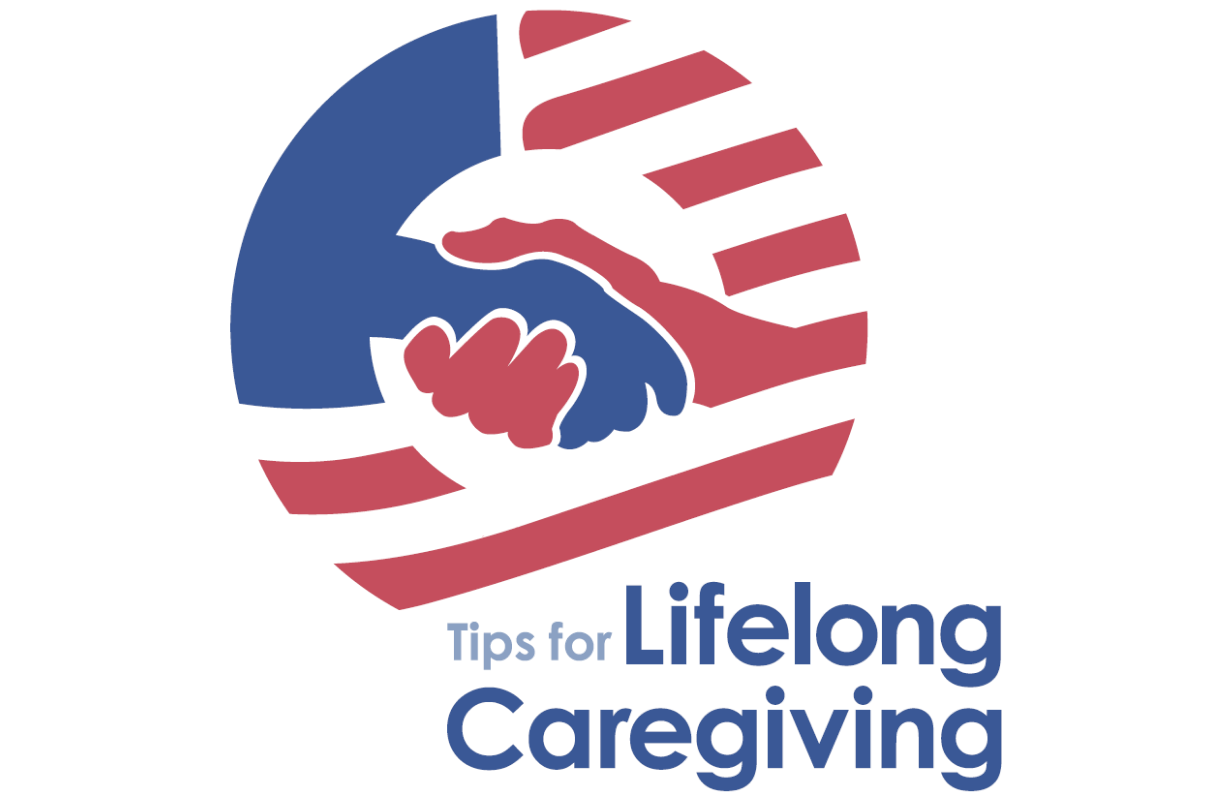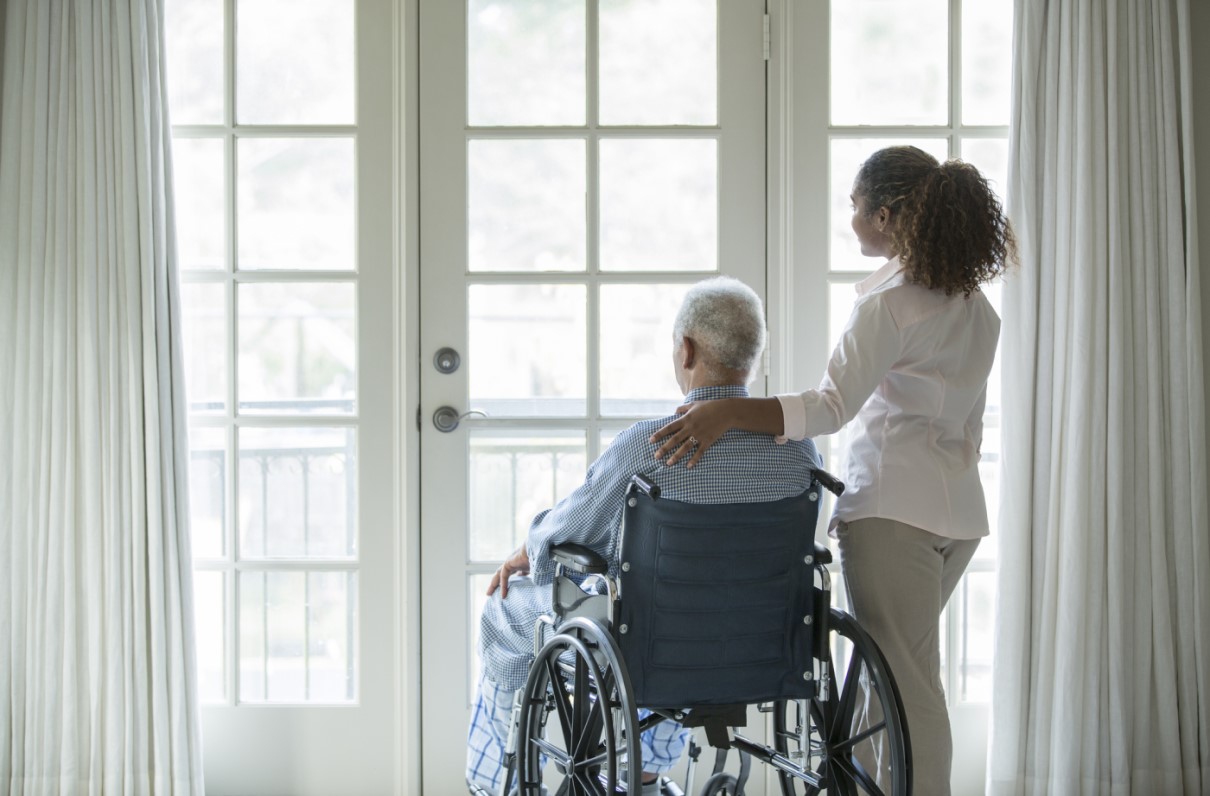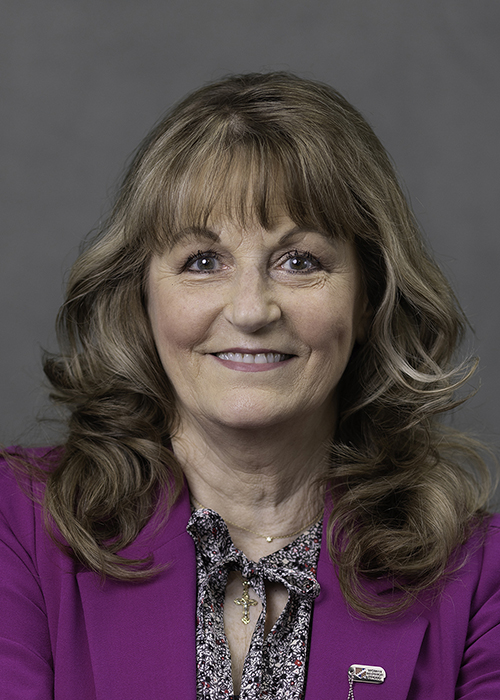One of MOAA’s top health care priorities this year is prioritizing and accelerating access to caregiving support, as well as long-term and extended care programs and services.
It’s why MOAA supports the Elizabeth Dole Home and Community Based Services for Veterans and Caregivers Act (H.R. 6823 | S. 3854), a comprehensive piece of legislation that will improve home and community-based services for veterans. You can learn more about the legislation, and send a letter to your legislators seeking their support, via MOAA’s Legislative Action Center.
This legislation comes in response to growing demand for VA’s long-term care (LTC), which increased 14% from FY 2014 to FY 2018, according to a 2020 Government Accountability Office (GAO) report. Spending also went up 33% in VA’s 14 LTC programs over that timeframe; per the report, the VA projects demand will continue to grow, with spending set to double by 2037.
Earlier this year, MOAA reported on VA’s plans to establish more than 200 new facilities or programs targeting geriatric or extended care by the end of 2026 at every medical center.
[RELATED: Check Out MOAA’s Updated Caregiver Resources]
Veterans, like many Americans, prefer to age in place at home — they want their care to be in familiar, comfortable, less invasive surroundings. The VA recognizes aging veterans need a health care system that values who they are, meets their unique needs, and provides the necessary care and quality services in a variety of settings.
VA’s Geriatrics and Gerontology Advisory Committee met the week of April 11 to get updates on the department’s progress in its efforts to become an age-friendly health system and other initiatives to improve care and services to veterans, their caregivers, and families. Some updates from the meeting are listed below.
Geriatric Research, Education and Clinical Centers
About 8% of veterans were 65 and older in 1970, according to the VA, compared with 9.6% of the U.S. population. The department recognized the “age wave” of World War II veterans that would soon hit the VA health system. In 1975, the VA established six Geriatric Research, Education and Clinical Centers (GRECCs) to meet the rapidly growing older veteran population. GRECCs were designed to attract scientists, clinicians, and health science students to the field of geriatrics; increase knowledge and develop, test, and implement new models of care; and transmit acquired knowledge to health professionals in the Veterans Health Administration (VHA) who provide direct care to aging veterans.
Today, over half of VHA-enrolled veterans are 65 or older. As the number of clinicians with advanced training necessary to care for the elderly has declined since the mid-1990s, GRECCs are more important than ever.
The VA is pushing education debt reduction and scholarships and clinical education programs to attract and retain geriatric professionals. The department is also redesigning its human resource practices to improve recruitment and onboarding of providers.
What’s New?
Recognition as an Age-Friendly Health System: Three years ago, the VA set out to make the VHA, the largest health care system in the U.S., an age-friendly system, joining a movement led by the Institute for Healthcare Improvement.
This movement is about health systems establishing evidence-based practices to meet individual needs rather than a one-size-fits-all approach. For veterans, this approach focuses on four key practices:
- Determining the personal goals and care preferences of each veteran.
- Using medication to better manage mobility and cognitive abilities.
- Preventing, treating, and managing dementia, depression, or other cognitive conditions.
- Ensuring veterans can move safely in their lives and do what matters most to them.
To date, the VHA has 51 medical centers officially recognized as age-friendly facilities. By FY 2025, it plans to have all 171 medical centers deemed age-friendly. Once facilities earn that designation, the VHA plans to continuously improve its programs and processes so it can provide the care veterans want, need, and deserve.
Expansion of Home and Community Based Services: This year, the VA started a large five-year expansion of several home and community-based care programs. These programs include:
- 70 Veterans Directed Care Programs
- 75 Home-Based Primary Care Programs
- 58 Medical Foster Home Programs
The expansion will total $165.8 million and is scheduled to end by FY 2026.
Redefining Elder Care in America Project: The VA is in the process of implementing a Redefining Elder Care in America Project (RECAP). The pilot project has two parts. First, the VHA will create a list of veterans at the highest risk for nursing home placement in the next two years using advanced analytics. Second, a geriatric coordinator will use the list to contact the veteran and caregiver proactively and assess needs or additional home or community care services required.
The goal is to see whether such interventions will improve aging in place for veterans. The VA hopes to apply a similar construct to preventing or delaying nursing home care, lessening the caregiver burden, decreasing hospitalization rates and emergency room visits, or addressing other high-risk situations.
Expansion of Geriatrics and Palliative Care Expertise: Among the programs in place to strengthen this part of the VA workforce:
- Workforce Initiatives. The department has held several VA-trainee recruitment events at 28 VA medical centers to identify potential candidates to expand the workforce in geriatric and extended care services. There is a proposal in the works to raise the pay table for geriatrics and palliative care physicians, and the VA has initiated a workforce recruitment and retention task force to address all disciplines within the VHA.
- Emergency Department Accreditation. The VHA’s geriatric emergency department transformation project aimed at providing interdisciplinary geriatric-oriented care for at-risk veterans has expanded to 62% of the 111 emergency departments. These facilities have achieved or are actively working toward Geriatric Emergency Department Accreditation by the American College of Emergency Physicians (ACEP). The VA is among the first health systems recognized by ACEP.
- VA Community Living Centers (CLCs). VA is implementing a CLC resident satisfaction survey and developing a journey map to outline the veteran’s path for care. Additionally, a pandemic plan has been distributed to the field that outlines the quality oversight process needed through the remainder of the COVID-19 pandemic. The Office of Geriatrics and Extended Care has partnered with the Office of Mental Health to provide suicide prevention training and is developing a toolkit for CLC field personnel.
- State Veteran Home (SVH) Modernization. Though not operated by the VA, SVHs receive significant funding resources for construction costs, ongoing maintenance, and grants and per diems to help reimburse costs for a veteran’s care. Veteran costs vary based on service connection and the type of care needed. The VA has specific areas of oversight it must perform and it may establish sharing agreements with SVHs for resources and specialty care.
A Longer-Term Focus
The VA also has made veterans’ long-term and extended care program a focus in its FY 2022-2028 Strategic Plan — for aging, frail, and end-of-life veterans of all ages. According to the plan, VA will implement six strategies to prepare for an expected increased number of veterans needing services by:
- Expanding home and community-based services (aging in place)
- Modernizing systems for health aging
- Modernizing and improving facility-based care
- Improving access with technology
- Increasing geriatric expertise
- Developing data definition and processes
Caregiving
Equally important to the VA are the 1.1 million caregivers supporting veterans and servicemembers. The department is expanding education, resources, supportive services, and other caregiver programs to support veterans and caregivers.
The VA addresses this issue in its strategic plan, noting efforts to “partner with DoD and the veteran caregiver community and other organizations with interests in research on caregivers or caregiving to understand the challenges and develop practical solutions that improve the financial security, experience, outcomes and quality of life for veterans, servicemembers and their caregivers.”
MOAA is committed to working with the VA and stakeholder groups to ensure the department achieves these outcomes. In a March 8 hearing before the Senate and House Committees on Veterans’ Affairs, MOAA urged Congress and the VA to “fast-track more support for long-term care facilities.”
MOAA also urged funding and passage of the Elizabeth Dole Home and Community Based Services for Veterans and Caregivers Act as part of this goal. Contact your lawmakers today and request their support.
 Tips for Lifelong Caregiving
Tips for Lifelong Caregiving
MOAA has partnered with the Elizabeth Dole Foundation to provide an online resource outlining legal and financial support available to multiple generations of caregivers.

